Minecraft 1.20 introduces a significant update to the game, offering players an array of exciting new features. This major update incorporates a fresh biome, an assortment of blocks, diverse mobs, and innovative mechanics. One notable inclusion is the cherry blossom biome, a picturesque landscape adorned with enchanting pink-colored cherry trees, imparting a uniquely captivating sight to the horizon.
In total, there are nine types of trees available in Minecraft 1.20. These include oak, spruce, birch, jungle, acacia, dark oak, azalea, mangrove, and cherry trees.
Everything you need to know about trees in Minecraft 1.20
Chart New Territories with the ultimate Minecraft Seed Generator!
In addition to the conventional tree types, several other structures can be loosely defined as trees, such as the huge fungus, giant mushrooms, and the chorus plant.
1) Cherry Blossom Trees

Within Minecraft's cherry blossom forest biomes, you will encounter elegant white and pink trees known as cherry blossoms. To cultivate a cherry blossom tree, you will require a cherry blossom sapling. Plant the sapling in the ground and patiently await its growth, or rush the process by employing bone meal. These exquisite trees possess delicate leaves with white or pink flowers and a cherry blossom effect.
2) Oak Trees
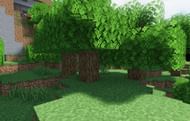
Oak trees represent the most common variety of trees in Minecraft, thriving in almost any biome. To cultivate it, simply acquire an oak sapling and some dirt. Plant the sapling in the soil and allow it to grow naturally, or utilize bone meal to accelerate the process.
Oak trees may exhibit varying shapes and sizes, occasionally yielding branches or apples. In swamp biomes, you will encounter a slightly larger variant of the standard oak tree, accompanied by the presence of vines.
3) Spruce Trees

Tall and dark, spruce trees are commonly found in taiga and snowy biomes within Minecraft. Plant a spruce sapling in the ground and wait for it to grow, or use bone meal to accelerate growth. Interestingly, spruce trees can grow as mega variants by arranging four saplings in a 2x2 pattern.
This results in an impressive towering tree that adds a striking presence to the surrounding environment.
4) Birch Trees
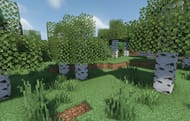
Identified by their white trunks, birch trees are commonly found in the forest biomes of Minecraft. Cultivating this tree necessitates a birch sapling and some dirt. Plant the sapling in the soil and patiently observe its growth, or employ bone meal for a faster result.
Birch trees typically exhibit consistent heights and shapes, though they occasionally display distinct patterns on their bark. Two variations of birch trees exist: a smaller cultivatable type obtainable through birch saplings and a taller, rarer variant exclusively located in tall birch forest biomes.
5) Jungle Trees

Jungle trees are grand, lush structures in Minecraft that thrive in jungle biomes. To grow this tree, you will need a jungle sapling and dirt. Plant the sapling in the soil and allow it to grow naturally or instantly using some bone meal. Like spruce trees, jungle trees can manifest as mega variants by arranging four saplings in a 2x2 formation.
6) Acacia Trees

Acacia trees are characterized by their twisted and orange-hued appearance, commonly found in savanna biomes. Cultivating an acacia tree in Minecraft needs acquiring an acacia sapling and some dirt. Plant the sapling in the soil and patiently await its growth, or expedite the process using bone meal. These trees boast a distinctive shape, featuring a flat canopy and a diagonal trunk.
7) Dark Oak Trees
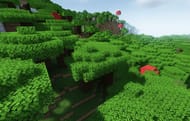
Dark oak trees are dense and dark-hued, typically located in roofed forest biomes. To grow a dark oak tree, you will require four dark oak saplings and some dirt. Arrange the saplings in a 2x2 square formation on the ground and allow them to grow naturally, or speed up the process using bone meal. Dark oak trees possess expansive canopies with branches and occasional clusters of mushrooms.
8) Azalea Trees
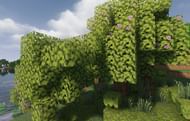
Azalea trees are adorned with pink flowers and can be found in lush caves biomes. Growing an azalea tree involves obtaining an azalea sapling and a moss block. Place the sapling on the moss block and patiently observe its growth, or utilize bone meal to expedite the process.
9) Mangrove Trees

Mangrove trees, characterized by their green and swampy appearance, thrive in the mangrove swamp biomes of Minecraft. To cultivate this tree, you will need a mangrove sapling and a waterlogged clay block. Submerge the clay block in water and place the sapling on it, allowing it to grow naturally.
Alternatively, use bone meal to accelerate the growth process. Mangrove trees are characterized by their roots that extend into the water and are occasionally draped with vines.
10) Huge Fungus

The Nether introduces the enormous fungus, resembling a colossal tree-like structure. It comes in two varieties: the huge crimson fungus and the huge warped fungus. The former is found in crimson forests, while the huge warped variant can be located in warped forests. These gigantic fungi naturally occur within their respective biomes, showcasing unique and captivating forms.
11) Chorus tree
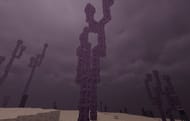
The chorus is a plant-like feature that generates in the highlands of the outer End islands. It consists of chorus plant blocks and chorus flowers. The flower generates at the top of each branch. While the plant heights range between five and 22 blocks, most stop growing before they reach 16 blocks tall.
Chorus plants generate on the outer islands of the End, in the End highlands. They are formed in tall, coral-like patterns. They are the only source of chorus fruit and flowers. The player can grow a new chorus plant by placing its flower on a block of end stone.
These are all the different types of trees you can encounter in Minecraft 1.20. You can grow them from saplings or find them naturally generated in their respective biomes. Alternatively, you can utilize creative mode to obtain them instantly.
Uncover new worlds with our Minecraft Seed Generator!

